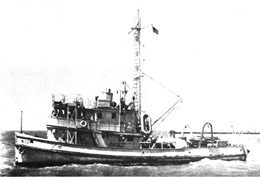On August 23, 1943, U.S. Navy torpedo planes accidentally sink the coastal minesweeper USS
Crow
(AMC-20) in Puget Sound.
In February 1941, the United States bolstered its defenses as World War II raged in Europe and Asia. Desperate for specialized ships, the U.S. Navy purchased the 83-foot, wood-hulled purse seiner Jadran, built in 1935. The Jadran's wood hull made her useful against underwater mines, which could often be detonated by a steel ship's magnetic field. The Jadran became the USS Crow with the classification AMC (coastal mine sweeper) and was assigned to the 13th Naval District at the Puget Sound Naval Shipyard in Bremerton. She had a crew of 11 and her only armament was a .30 caliber machine gun.
Beginning in 1915, the Navy operated a torpedo station at Keyport and used the waters of Liberty Bay and Port Orchard to test torpedoes. In August 1943, the Crow was being used as a target for Navy torpedo planes. An errant torpedo slammed into the wood hull and the Crow sank.
During World War II, local newspapers did not report on military activities and the Crow's loss was withheld from the public. Published Navy records do not reflect any loss of life, but show that the Crow was officially struck from the rolls on April 8, 1944.

